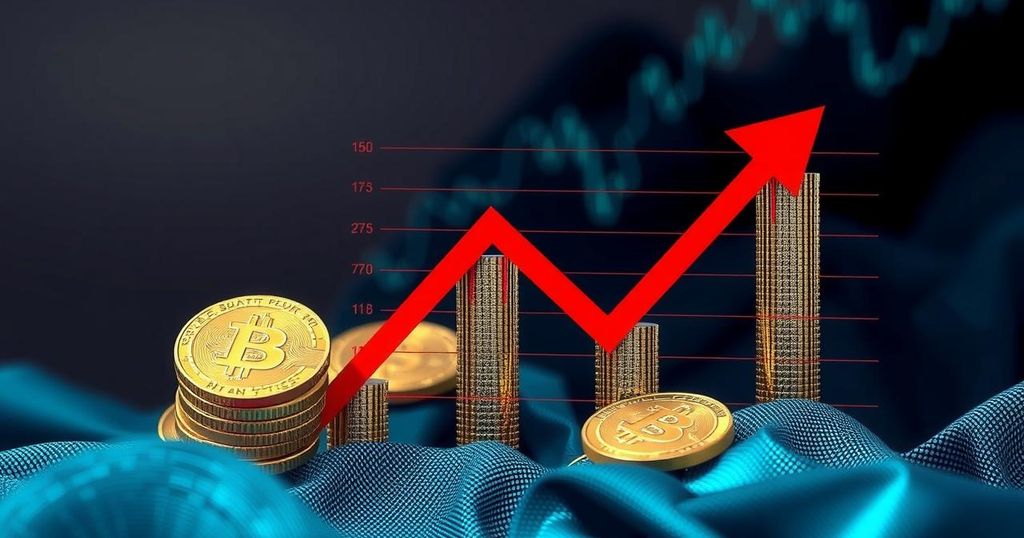Bitcoin Hashrate Reaches Record Levels as Public Miners Dominate Network
The Bitcoin network has achieved an all-time high hashrate exceeding 700 EH/s for the first time, reflecting a 6% increase in just one week. Mining profitability is up, driven by a surge in Bitcoin prices and transaction fees. Publicly listed miners now contribute 28.9% of the network’s hashrate, illustrating a growing market share. The upcoming difficulty adjustment is expected to be over 4%, responding to the new levels of hashrate.
The Bitcoin network has achieved a remarkable milestone, with its seven-day moving average (7DMA) hashrate exceeding 700 EH/s for the first time, reflecting a 13% increase since the previous halving event occurred in April. According to data from Glassnode, the current hashrate stands at an unprecedented 703 exahashes per second (EH/s), which marks a significant 6% increase over the past week alone. This surge in hashrate comes alongside an increase in mining profitability, as Bitcoin’s price has risen, reaching $68,000, thereby elevating the hashprice above $50 PH/s, its highest level in two months. The share of the total hashrate contributed by publicly traded miners has also witnessed a substantial rise. Data analyzed by Bitcoin mining expert Sebastian Ski illustrates that in September, twelve leading publicly listed miners accounted for 28.9% of the overall hashrate, translating to over 200 EH/s. This represents a near 10% increase in their contribution to the network since October 2022. Ski has indicated that “The public miners are taking market share away from other miners in the world.” Notably, prominent players such as CleanSpark, MARA Holdings, Riot Platforms, and IREN have shown significant growth in their hashrate contribution during the past year. It is important to note that Bitcoin mining operates under highly capital-intensive conditions, and with the reduction of block rewards every four years, many weaker miners may find it increasingly challenging to remain competitive. As a result, miners with lower energy costs and robust financial resources are anticipated to continue expanding their market share. Moreover, due to the rise in hashrate, the Bitcoin network is set for a difficulty adjustment that will likely see a 4% increase on October 23, ensuring that blocks continue to be mined approximately every ten minutes. The increase in transaction fees has been fueled by the introduction of the runes protocol, which accounted for more than 50% of all transaction fees on October 17, further enhancing the overall profitability of Bitcoin mining.
Bitcoin mining relies on computational power to validate transactions and maintain the security of the network on a proof-of-work blockchain. The hashrate indicates the total computational power employed in this process, and its fluctuation directly impacts mining profitability. In light of the recent halving event, which cut the Bitcoin block reward in half, the adjustments in network difficulty and the competitive landscape for miners have gained heightened importance, affecting both public and private mining operations. The rise of publicly listed miners highlights their growing dominance and strategic position within the industry, particularly in an environment where operating costs play a crucial role in sustaining profitability.
In summary, the Bitcoin network has reached an all-time high in hashrate, driven by increased mining activity and profitability. Publicly listed miners are capturing a growing share of the total hashrate, enhancing their influence in the market. Factors such as the recent surge in Bitcoin’s price, improved transaction fees, and upcoming network difficulty adjustments collectively underscore the dynamic nature of the cryptocurrency mining landscape. As many miners face challenges in maintaining operations, the competitive advantage may continue to shift towards those with optimal resources.
Original Source: www.coindesk.com








Post Comment